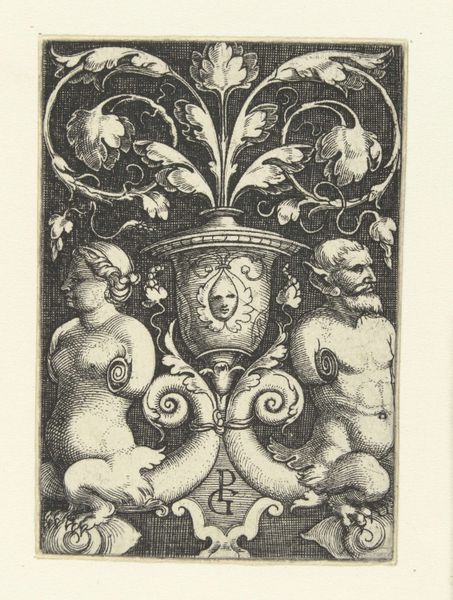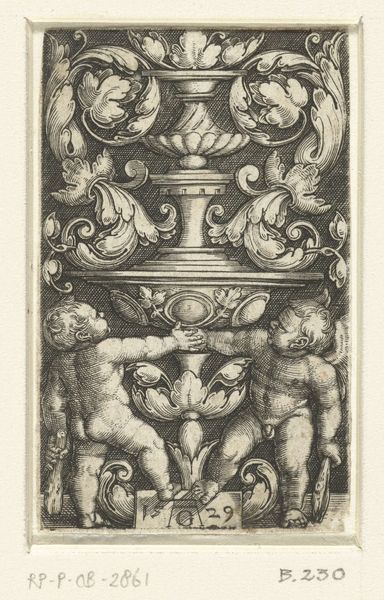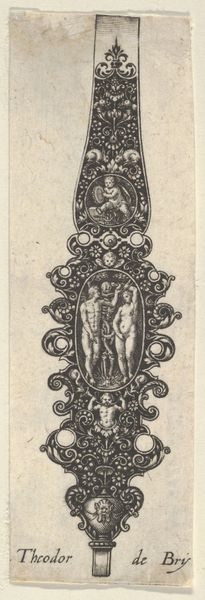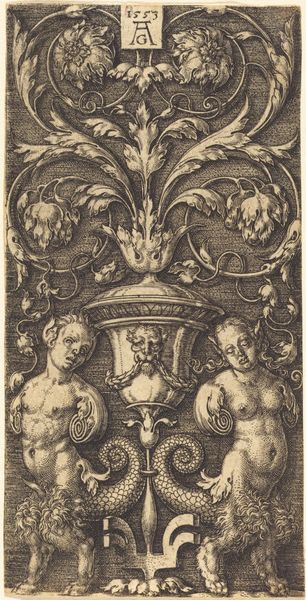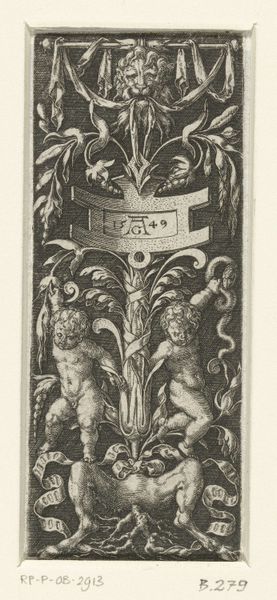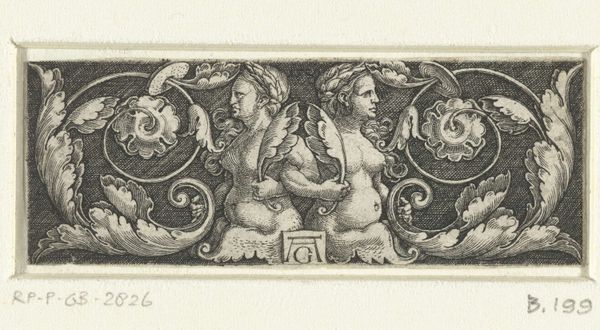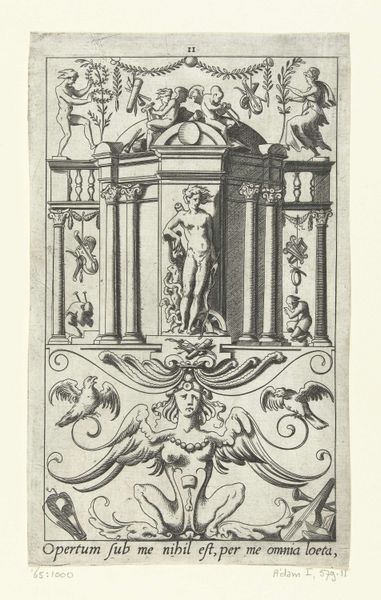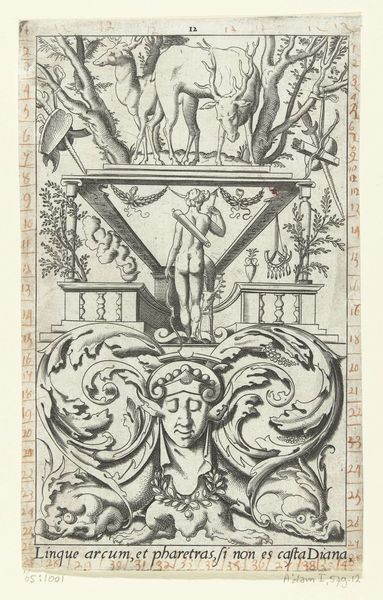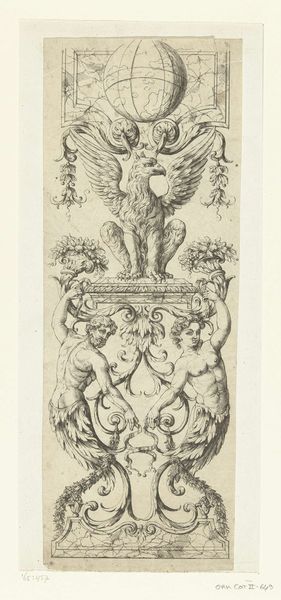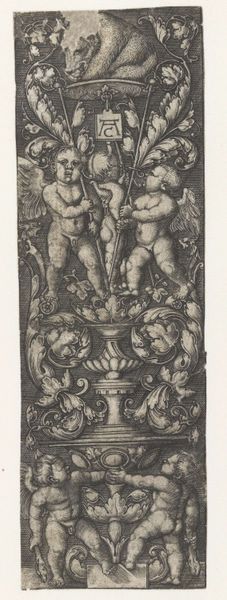
drawing, print, intaglio, engraving
#
drawing
#
pen drawing
# print
#
pen illustration
#
intaglio
#
old engraving style
#
figuration
#
11_renaissance
#
northern-renaissance
#
nude
#
engraving
Dimensions: height 75 mm, width 28 mm
Copyright: Rijks Museum: Open Domain
Curator: What a fascinating print. This is Heinrich Aldegrever’s "Kandelaber met twee vrouwentorso's," created around 1528. It’s an engraving, currently held in the Rijksmuseum collection. Editor: My first impression is that it’s incredibly ornate and precise for something made so long ago. There's a stark elegance in its composition, the details feel almost sculptural, like peering at a miniature monument. Curator: Indeed. Aldegrever was a prominent figure in the Northern Renaissance, deeply engaged with humanist ideas. He was a printmaker, but also associated with the Anabaptist movement, often embedding social and political commentary within his ornamental works. Editor: I see that! Look at how the textures are rendered, and the light. Note the way he's playing with positive and negative space to define the form. The formal relationships here are striking. The lines are incredibly sharp and create dynamic movement within the rigidly symmetrical structure. Curator: Right. And let's consider its purpose. This wasn’t simply a work of art for a wall. These prints of ornamental objects served as models for artisans—goldsmiths, furniture makers. Aldegrever provided designs that fueled the production of luxury goods for a growing merchant class. Editor: That does recontextualize things; I appreciate that, but the artistry displayed goes well beyond functionality. The candelabra form itself, bisected by the two female torsos... It has a symbolic richness that invites exploration beyond practical considerations. There is tension embedded into the form. Curator: Absolutely. Aldegrever synthesized classical motifs with Northern sensibilities. By incorporating nude female figures into functional designs, he blurs the boundaries between high art and craft, between the aesthetic and the utilitarian. Editor: It almost anticipates Art Nouveau in some respects. Looking at the torsos specifically, you're drawn into a very sensual experience with what should only be utilitarian objecthood. And what about Aldegrever's role, the physical act of production to bring about his concept in materiality, do you imagine his perspective was unique? Curator: Knowing Aldegrever’s associations with radical social movements, perhaps the incorporation of female forms challenges established societal norms about the roles of women in society. Or possibly the male gaze of the upper class consumer. Editor: Perhaps! Regardless, engaging with these intricacies of Aldegrever's visual rhetoric prompts compelling conversation about how we encounter works like this. Curator: Examining this candlestick design by Aldegrever truly does show that even seemingly simple objects from the past reveal incredibly rich details.
Comments
No comments
Be the first to comment and join the conversation on the ultimate creative platform.
